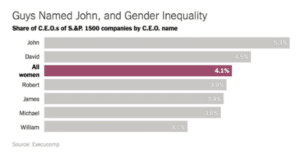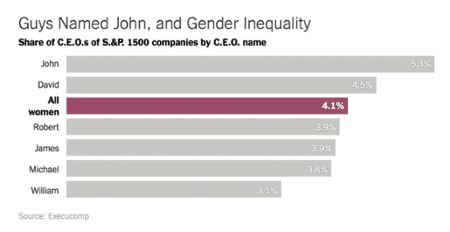It’s not news that gender bias persists at U.S. universities, especially in the sciences. What’s surprising is how long-lasting and pervasive this bias is. Even today, gender biases continue to color how female academics are viewed professionally.
Science professors at U.S. universities widely regarded women undergraduates as less competent than men with the same skills and accomplishments, according to a 2012 Yale study, “Science Faculty’s Subtle Gender Biases Favor Male Students,” Proceedings of the National Academy of Sciences, by Corinne Moss-Racusin, John F. Dovidio, Victoria Brescoll, Mark J. Graham and Jo Handelsman.
Additionally, professors were less likely to mentor women students. And when presented with two imaginary job applicants of equal education and achievements, one male and one female, professors were more likely to choose the man, and those job offers that women did receive were for salaries on average $4,000 lower than for the men. The study concluded that the bias was an “outgrowh of subconscious cultural influences.” Such insidious biases are hard to tackle. People deny even to themselves that they have such biases.
At the professional level, this persists as well. A study of 248 performance reviews shared by 180 people in 28 different companies, from large technology corporations and smaller companies as well, found that reviews of women were sharply more critical than of men, as reported in “The Abrasiveness Trap: High-Achieving Men and Women Are Described Differently in Reviews,” a 2014 article by Kieran Snyder in Forbes. Further, 71% of women’s reviews included critical feedback, while only 2% of men’s reviews contained critical feedback. Did the women truly merit that much more criticism? How does this affect advancement?
It starts at the top: CEOs and directors. As you can see from this chart, more large companies are headed by men named John than are headed by women:

Seriously, for each woman CEO of the 1,500 firms on the S&P 500, there are four men named John, Robert, William or James. Again, what is the message?
Boards of directors are barely better. Consider women’s standing as leaders in the ranking published by Standard & Poor’s (S&P), the financial service company. A study by Ernst & Young found that only 16% of the board seats for the 1,500 companies in the S&P 500 are held by women, less that the percentage of seats held by directors names John, Robert, James and William. Among smaller companies, it is worse. At the S&P Midcap 400 companies, women hold only 15% of board seats, and only 12% at the S&P SmallCap 600. While smaller than the S&P 500, each company in the midcap group is valued at well over $1 billion, and some are household names.
It doesn’t have to remain this way. I realize that biases are entrenched, and can take some doing to overcome.
I’d love to hear your thoughts on this. Have you or the girls in your life experienced this sort of gender bias? What were the circumstances, and what was the outcome? Thank you for sharing.




